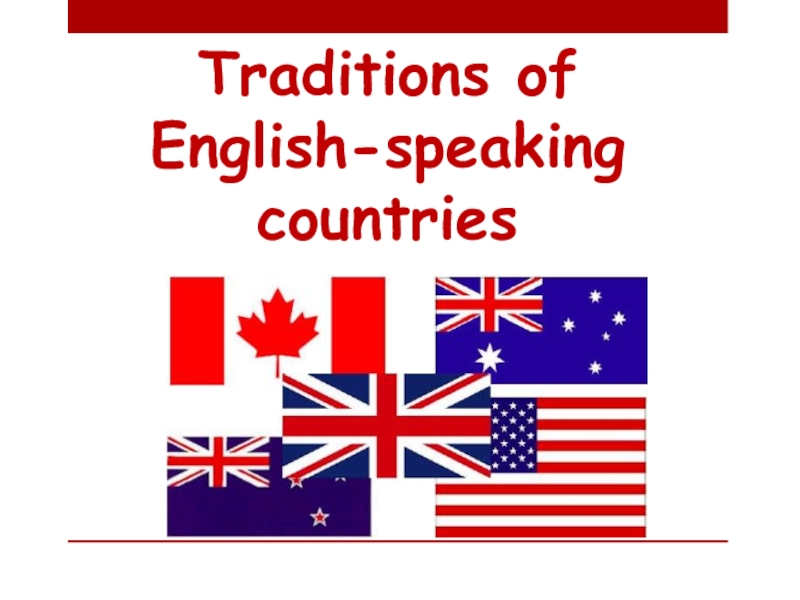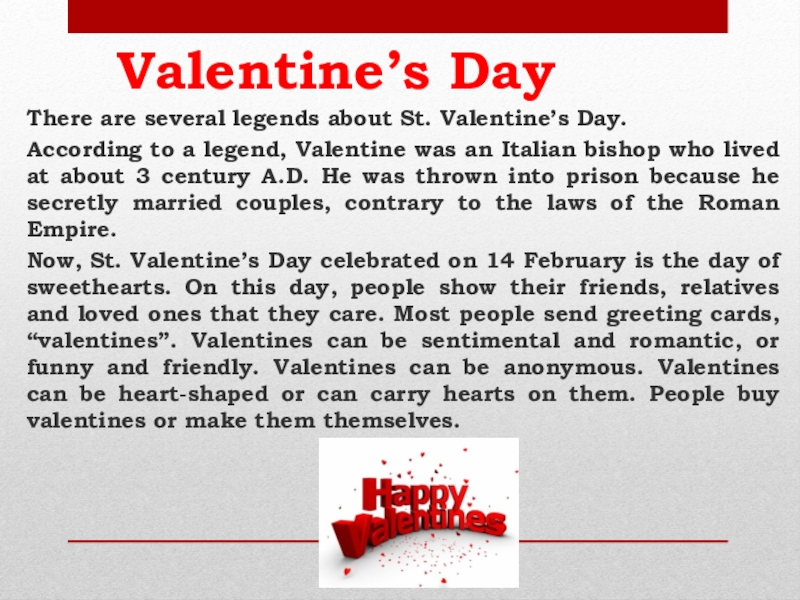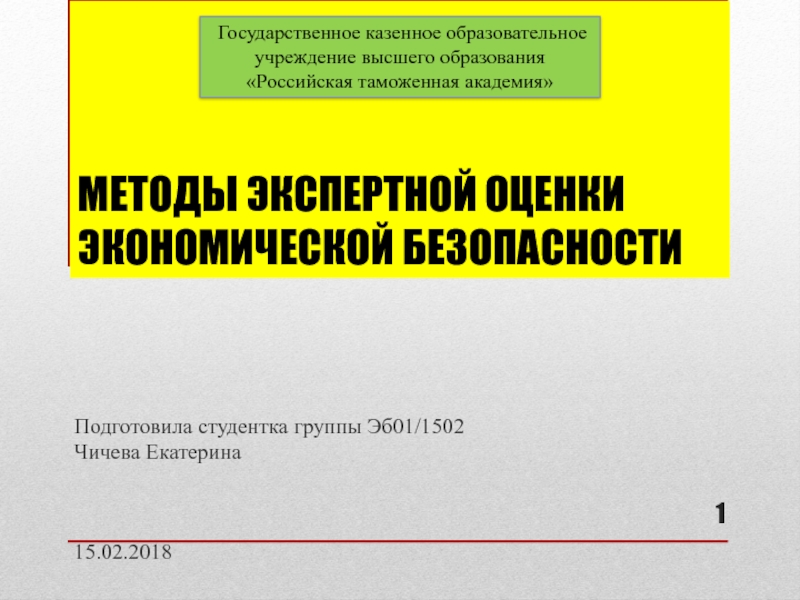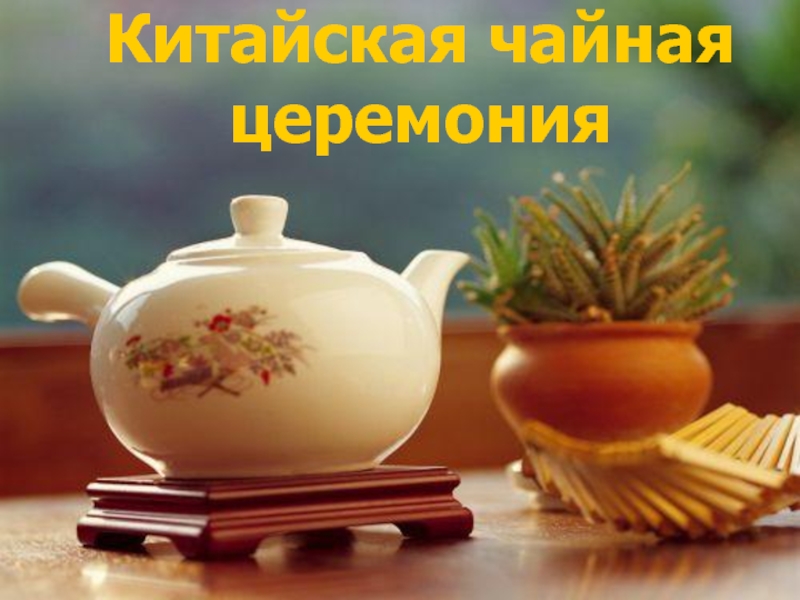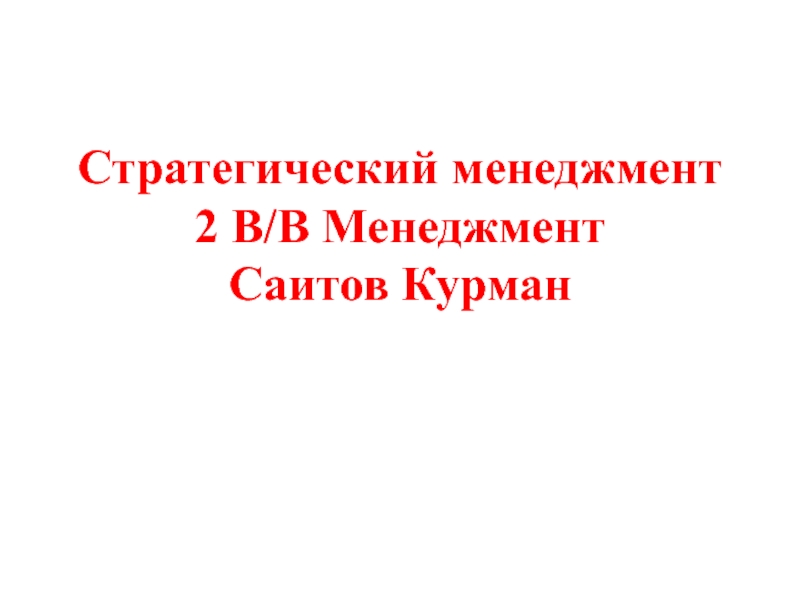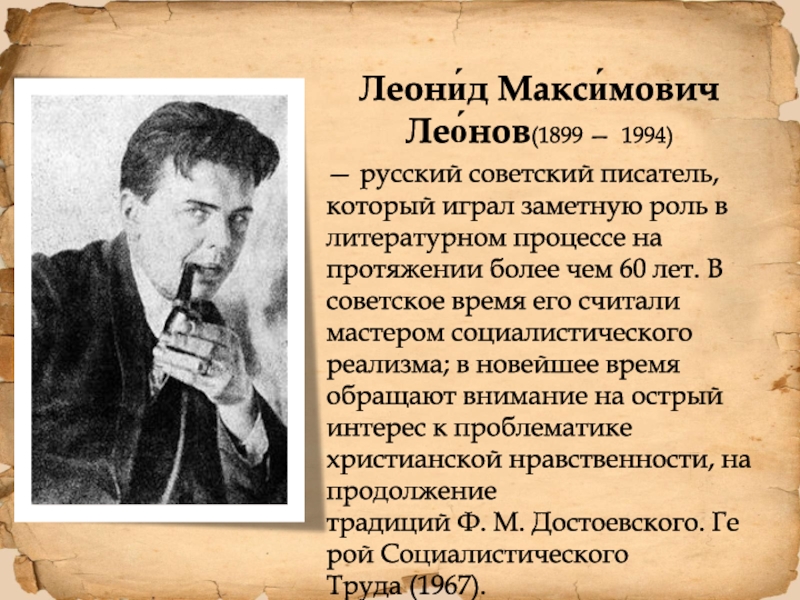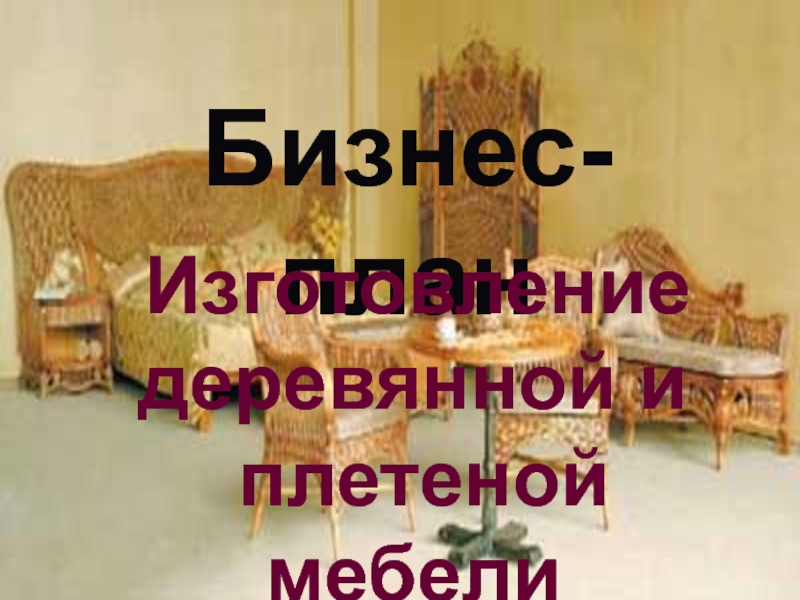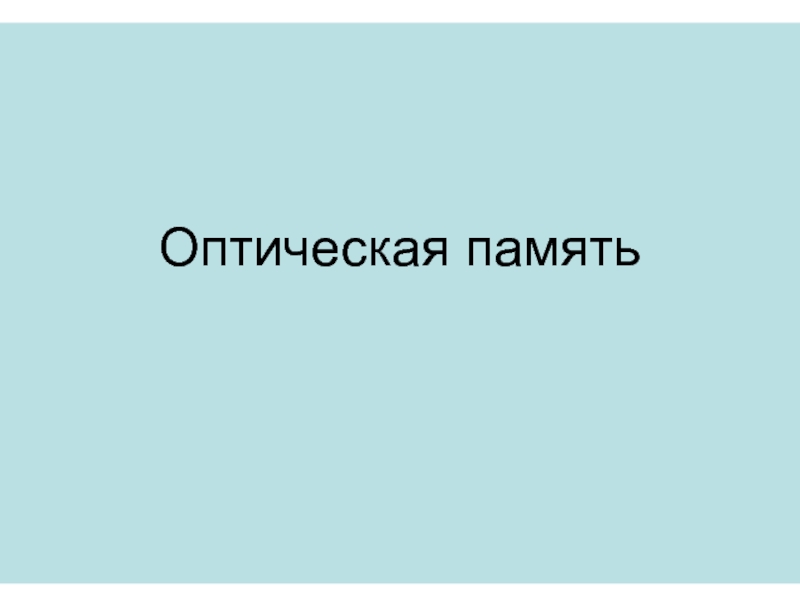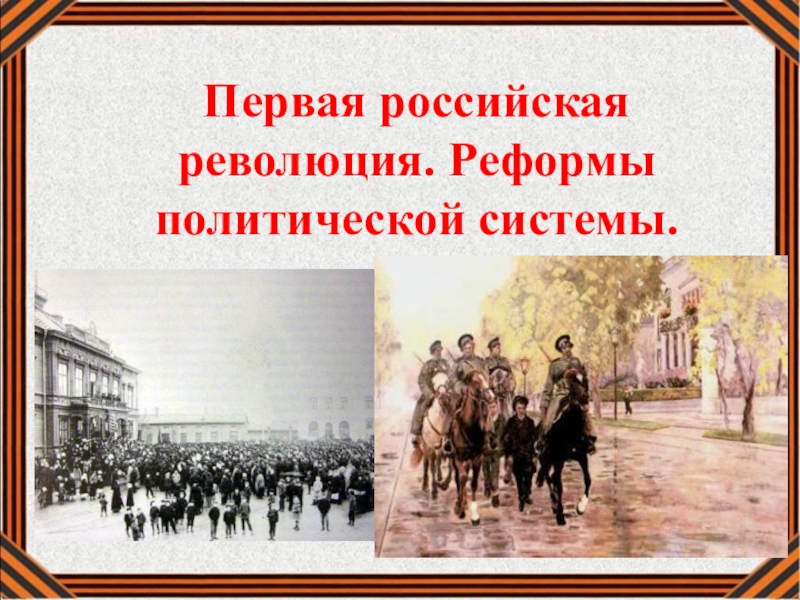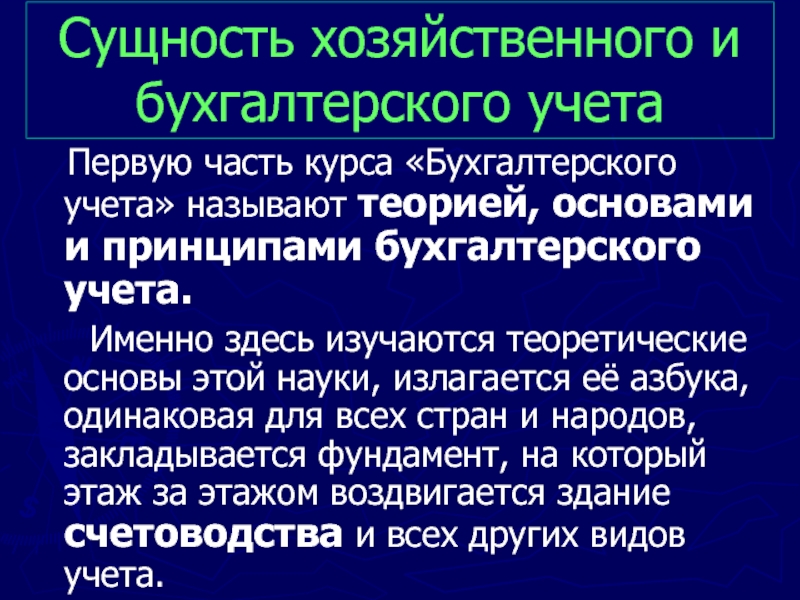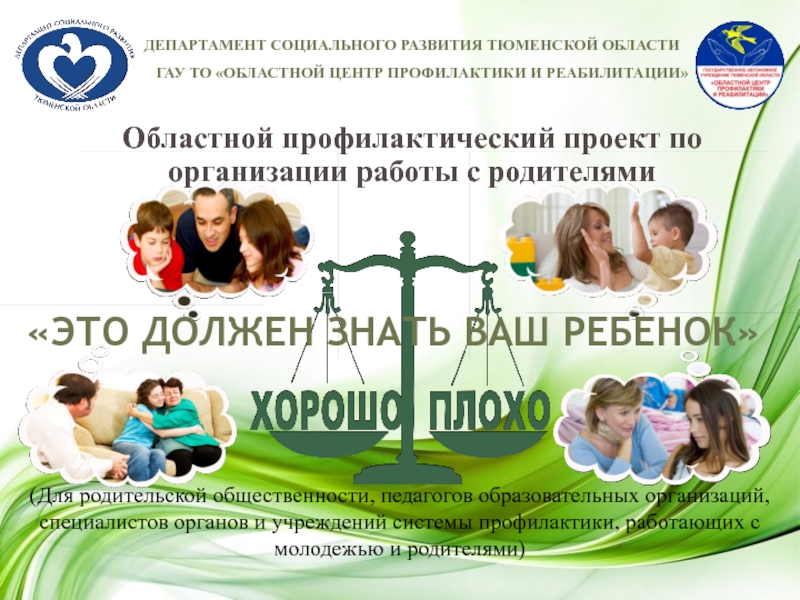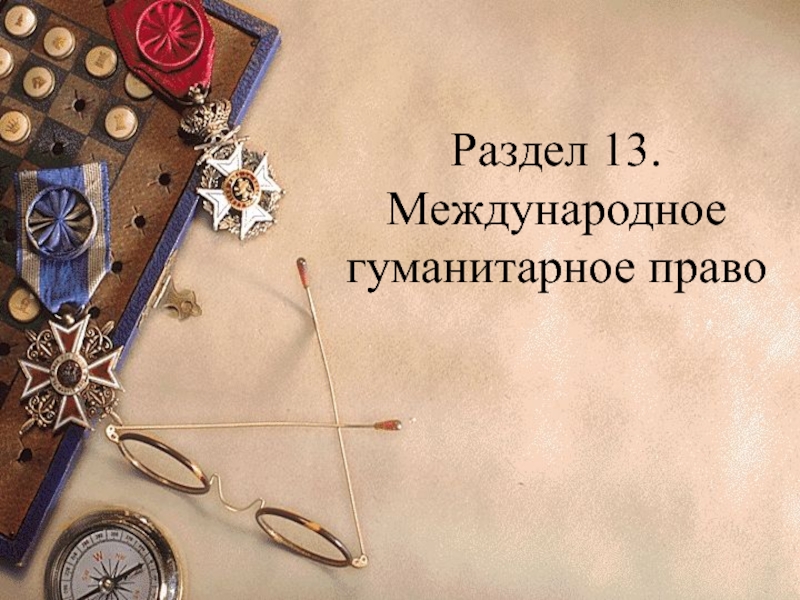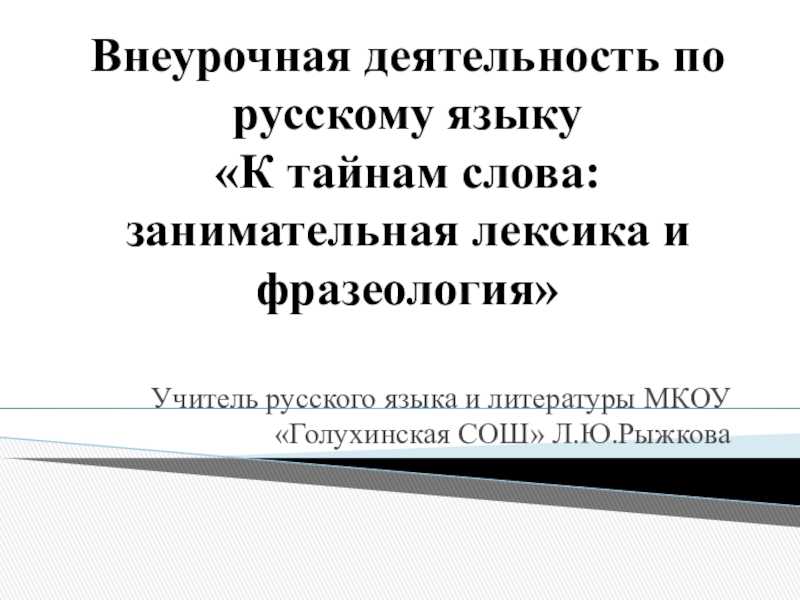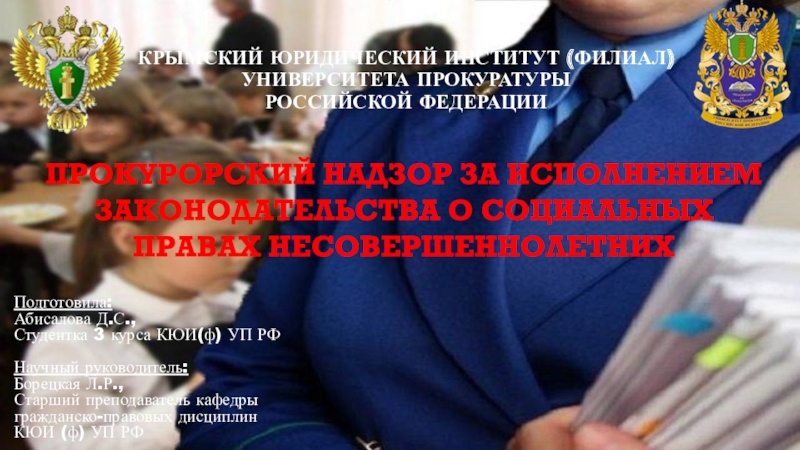Разделы презентаций
- Разное
- Английский язык
- Астрономия
- Алгебра
- Биология
- География
- Геометрия
- Детские презентации
- Информатика
- История
- Литература
- Математика
- Медицина
- Менеджмент
- Музыка
- МХК
- Немецкий язык
- ОБЖ
- Обществознание
- Окружающий мир
- Педагогика
- Русский язык
- Технология
- Физика
- Философия
- Химия
- Шаблоны, картинки для презентаций
- Экология
- Экономика
- Юриспруденция
Traditions of English-speaking countries
Содержание
- 1. Traditions of English-speaking countries
- 2. IntroductionPUBLIC HOLIDAYS AND CELEBRATIONS There are some
- 3. ChristmasChristmas is a Christian holiday that celebrates
- 4. Boxing Day Boxing Day in the
- 5. New Year’s Eve (December 31st) is more
- 6. Friday before Easter is called “Good Friday”.
- 7. Mothering Sunday is not a fixed day
- 8. Independence Day On July 4 the Americans
- 9. Halloween Halloween is a festival that takes place
- 10. Thanksgiving Day In 1620, a religious community sailed
- 11. Valentine’s Day There are several legends about
- 12. Скачать презентанцию
IntroductionPUBLIC HOLIDAYS AND CELEBRATIONS There are some public holidays. They are: Christmas Day, Boxing Day, Good Friday, Easter Monday, Spring Bank Holiday and Late Summer Bank Holiday. Most of these holidays
Слайды и текст этой презентации
Слайд 3Christmas
Christmas is a Christian holiday that celebrates the birth of
Jesus Christ. Most Christians celebrate Christmas on December 25. People
in the United States and Canada decorate their homes with Christmas trees, wreaths and ornaments. City streets are filled with colored lights; the sound of bells and Christmas carols can be heard everywhere.Children write letters to Santa Claus and tell him what presents they would like to get. People send Christmas cards to relatives and friends. Many companies give presents to their employees.
A Christmas tree is one of the main symbols of Christmas in most homes. Presents are placed under the Christmas tree. On Christmas Eve or Christmas morning, families open their presents. Some children hang up stockings so Santa Claus can fill them with candy, fruits and other small gifts.
Слайд 4Boxing Day
Boxing Day in the United Kingdom is
the day after Christmas Day and falls on December 26.
Traditionally, it was a day when employers distributed money, food, cloth (material) or other valuable goods to their employees. In modern times, it is an important day for sporting events and the start of the post-Christmas sales.Traditionally, fox hunting was a popular sport in the upper class. Nowadays, fox hunting is outlawed. Horse racing and football (soccer) are now popular sports.
For many people Boxing Day is an opportunity to spend time with family, friends, and neighbours.
Слайд 5
New Year’s Eve (December 31st) is more special for Scottish
people, who celebrate it with their families. At midnight Scottish
people hold their hands in a large circle and sing the song “Auld lang syne” by Robert Burns. That is how they celebrate the coming of a new year.Слайд 6Friday before Easter is called “Good Friday”. People usually make
special buns with a cross on top. On this day
the Church marks Jesus Christ’s death.Easter Monday is the first Monday after Easter Day.
May Day Bank Holiday is celebrated on the first Monday after May Day (May 1st). People celebrate the coming of spring. They also select the most beautiful girl on this day, who becomes May Queen. Sometimes May poles are constructed with long coloured ribbons and children dance around these poles holding the ends of these ribbons.
Spring Bank Holiday is marked on the last Monday in May.
August Bank Holiday is the last Monday in August. British people usually go on picnics on spring and summer bank holidays.
Слайд 7Mothering Sunday is not a fixed day because it is
always the middle Sunday in Lent means that Mother's Day
in the UK will fall on different dates.Mothering Sunday is also sometimes known as Simnel Sunday because of the tradition of baking Simnel cakes. The Simnel cake is a fruit cake. 11 marzipan balls representing the 12 apostles minus Judas, who betrayed Christ.
Слайд 8Independence Day
On July 4 the Americans celebrate their national holiday-Independence
Day. In 1755, the Revolutionary War against British rule began.
On July 4, 1776 the Continental Congress approved the declaration of Independence. People have a day-long picnic with favourite foods like hot dog, hamburgers, potato salad, baked beans. Lively music is heard everywhere. Some cities have parades. In the evening people gather to watch fireworks.Слайд 9Halloween
Halloween is a festival that takes place on October 31.
Children dress in costumes and masks and go from door
to door saying “trick or treat”. The neighbors give children such treats as candy, fruit and pennies so that children do not play tricks on them.Jack-o’-lanterns are pumpkins with a face carved into one side. Most jack-o-lanterns contain a candle inside.
Fortunetelling is an important part of Halloween. For example, a coin, a ring were baked into a cake. It was believed that the person who found the ring would marry soon.
People once believed that there were many ghosts and witches on the Earth and that they met on October 31 to worship the devil. Today, people do not believe in ghosts and witches but they like to tell stories about them on Halloween.
Слайд 10Thanksgiving Day
In 1620, a religious community sailed across the Atlantic
Ocean to settle in the New World. They settled in
what is now known as the state of Massachusetts. Their first winter in America was difficult. They arrived too late to grow a rich harvest. Moreover, half the colony died from diseases. The following spring the Indians taught them how to grow crops and how to hunt and fish.In autumn of 1621 they got a rich harvest. The following years many of the colonists celebrated the harvest with a feast of thanks.
On Thanksgiving Day, the last Thursday in November, family members gather at the house of an older relative, even if they far away. All give thanks for everything good they have. Charitable organizations offer traditional meal to homeless.
Foods, eaten at the first thanksgiving, have become traditional. The traditional thanksgiving meal consists of roast turkey stuffed with bread, cranberry jelly, mashed potatoes, pumpkin pie.
Слайд 11Valentine’s Day
There are several legends about St. Valentine’s Day.
According
to a legend, Valentine was an Italian bishop who lived
at about 3 century A.D. He was thrown into prison because he secretly married couples, contrary to the laws of the Roman Empire.Now, St. Valentine’s Day celebrated on 14 February is the day of sweethearts. On this day, people show their friends, relatives and loved ones that they care. Most people send greeting cards, “valentines”. Valentines can be sentimental and romantic, or funny and friendly. Valentines can be anonymous. Valentines can be heart-shaped or can carry hearts on them. People buy valentines or make them themselves.
